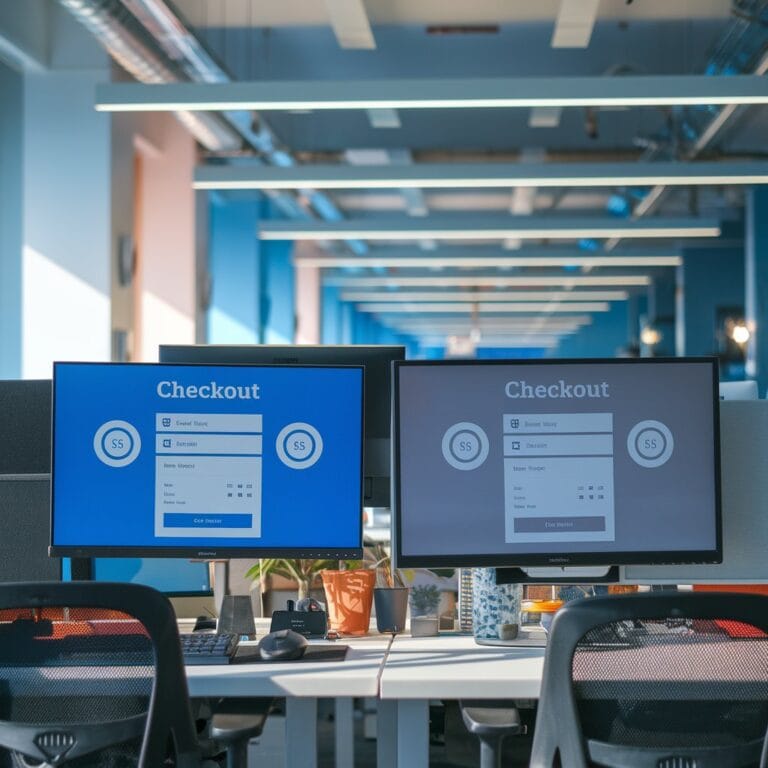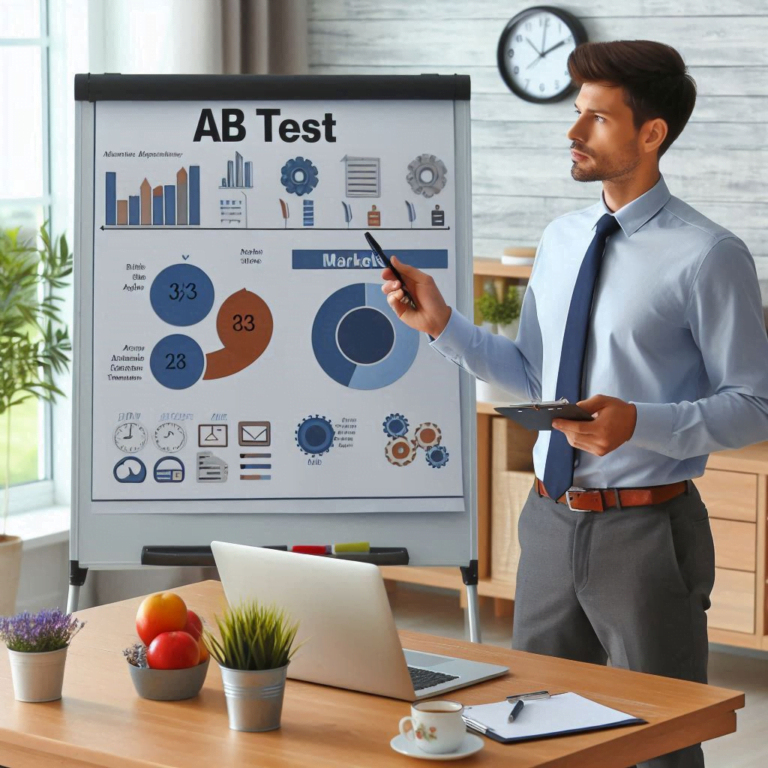Have you ever stared in disbelief at your website analytics, seeing a trail of abandoned carts leading straight out of your online store? You’re not alone. Cart abandonment plagues even the most established e-commerce businesses. But what if there was a way to turn those abandoned carts into happy customers and booming sales? Enter the world of A/B testing – a powerful tool that can help you optimise your checkout process and watch your conversions skyrocket. This guide will equip you with the knowledge and strategies to transform your checkout from a conversion graveyard into a sales-generating machine, all through the magic of A/B testing.
Let’s face it, every abandoned cart stings. You’ve poured your heart into your products, your marketing, and your website, only to see potential customers vanish at the final hurdle – checkout. But fear not, my fellow e-commerce warriors! Here’s where the power of A/B testing steps in, transforming your checkout process from a conversion graveyard into a sales-generating machine.
Understanding A/B Testing: Your Secret Weapon
Imagine you have two versions of your checkout page – one with a single “Buy Now” button, and another with a button labelled “Complete Your Purchase.” Which one converts better? A/B testing allows you to show these variations to different segments of your website visitors and track which one leads to more completed purchases. It’s like conducting a scientific experiment on your checkout process, revealing the tweaks that truly resonate with your customers.
Fine-Tuning Your Checkout: Where to Begin
Before diving headfirst into A/B testing, a little detective work is essential. Think of yourself as Sherlock Holmes, scrutinising your checkout flow for clues. Here are some key areas to investigate:
- Customer Feedback: Listen to the whispers in the wind (or rather, the shouts in your customer reviews). Are there recurring complaints about the checkout process? Is it too complex, confusing, or lacking in payment options?
- Website Analytics: Dive into the data – your website analytics are a treasure trove of insights. Identify pages with high abandonment rates and pinpoint where customers are dropping off.
- Heatmaps: These visual representations of user behaviour can be incredibly revealing. See where customers are clicking, scrolling, and hesitating – it could highlight unexpected friction points.
Once you’ve identified your suspects (checkout pain points, that is), it’s time to formulate your A/B testing strategy. Here are some golden rules to remember:
- Test One Change at a Time: It’s tempting to overhaul your entire checkout in one go, but resist the urge! Isolate one specific element, like the number of form fields, and test different variations against the original. This keeps things clear and helps pinpoint the exact cause of any conversion rate changes.
- Embrace the Data: Once your test is live, gather data like a seasoned archaeologist. Track conversion rates, bounce rates, and time spent on checkout for each variation. The data will tell you which version reigns supreme.
- Segment Your Audience: Not all customers are created equal. Consider segmenting your results by demographics, device type, or purchase history. This can reveal hidden trends and help you tailor your checkout experience for different customer groups.
- Test, Refine, Repeat: A/B testing isn’t a one-off trick. It’s a continuous process of experimentation and improvement. Keep testing new variations, inspired by data and customer feedback, to keep your checkout process sleek and customer-friendly.
Checkout Optimisation Strategies: A/B Testing in Action
Now, let’s get down to the nitty-gritty – specific checkout tweaks you can A/B test to supercharge your conversions:
- Streamline the Checkout Process: Imagine yourself sprinting to the finish line – that’s how your checkout should feel. Remove unnecessary form fields, like phone numbers for non-essential deliveries. Offer guest checkout options for speedier purchases.
- Multiple Payment Options: Choice is king (or queen) in the e-commerce world. Provide a variety of payment options, including credit cards, PayPal, and popular mobile wallets like Apple Pay and Google Pay. Cater to your international audience by offering local payment methods.
- Trust Badges are Your Friends: Displaying trust badges from security providers like Verified by Visa or Mastercard SecureCode can significantly boost customer confidence.
- Design Matters: The visual appeal of your checkout page matters. Test different colour schemes, fonts, and button placements to find a design that is clear, user-friendly, and aesthetically pleasing.
The Takeaway: Data-Driven Decisions for E-commerce Success
A/B testing empowers you to make data-driven decisions about your checkout process, not guesses. By implementing these strategies and embracing a culture of continuous improvement, you can transform your checkout from a conversion roadblock into a smooth, customer-centric experience that drives sales and keeps those shopping carts overflowing. So, grab your metaphorical lab coat, get testing, and watch your e-commerce business soar!





